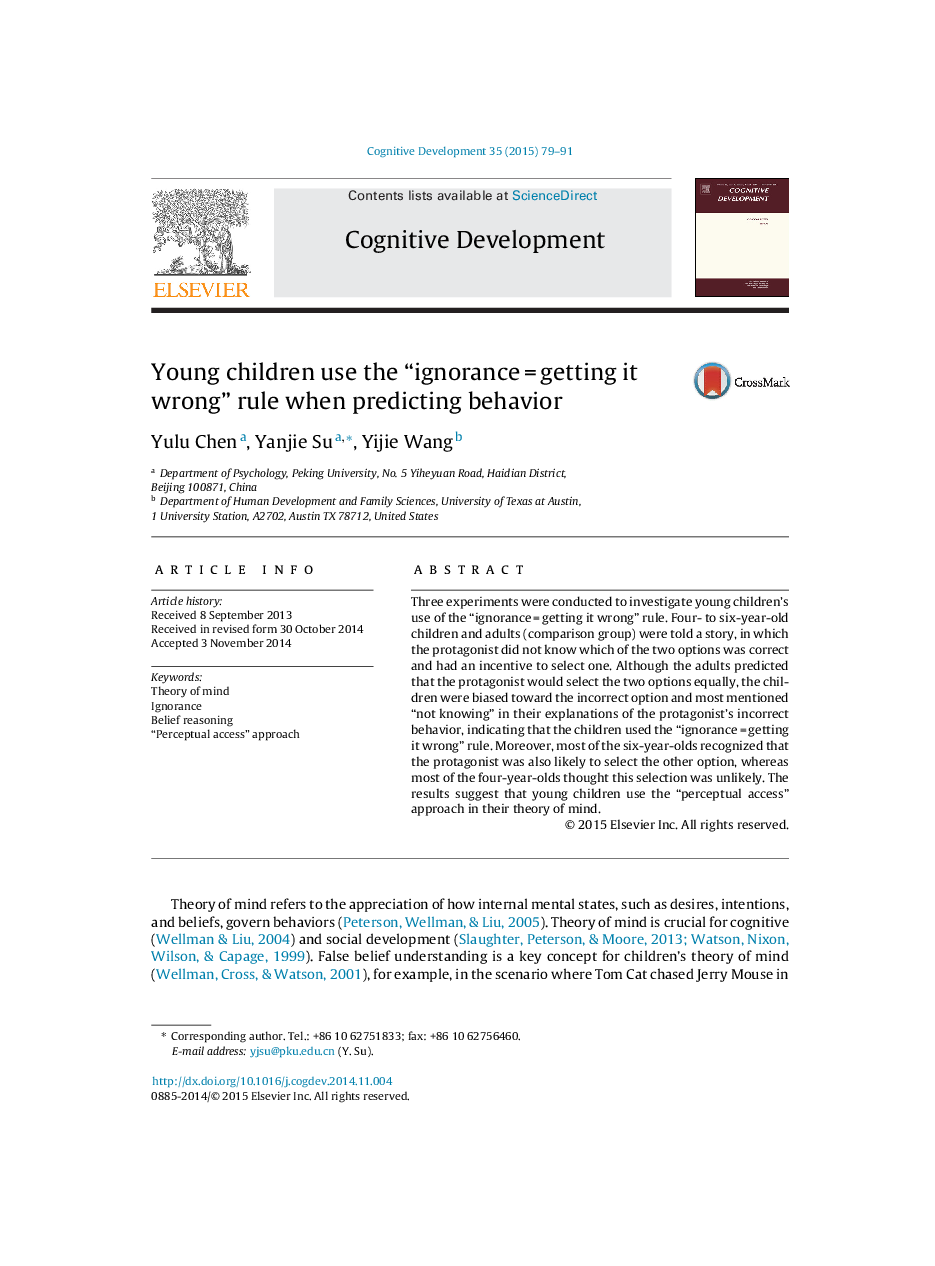| کد مقاله | کد نشریه | سال انتشار | مقاله انگلیسی | نسخه تمام متن |
|---|---|---|---|---|
| 916443 | 1473348 | 2015 | 13 صفحه PDF | دانلود رایگان |

• Three experiments using ignorance tasks were conducted to investigate young children's use of the “ignorance = getting it wrong” rule.
• The four- to six-year-old children were inclined to simply link ignorance with incorrect behaviors to predict that an ignorant person would select an incorrect option.
• Six-year-old children showed a partial appreciation that an ignorant individual was likely to guess either option, whereas the four-year-olds did not.
• Young children use the “perceptual access” approach in their theory of mind.
Three experiments were conducted to investigate young children's use of the “ignorance = getting it wrong” rule. Four- to six-year-old children and adults (comparison group) were told a story, in which the protagonist did not know which of the two options was correct and had an incentive to select one. Although the adults predicted that the protagonist would select the two options equally, the children were biased toward the incorrect option and most mentioned “not knowing” in their explanations of the protagonist's incorrect behavior, indicating that the children used the “ignorance = getting it wrong” rule. Moreover, most of the six-year-olds recognized that the protagonist was also likely to select the other option, whereas most of the four-year-olds thought this selection was unlikely. The results suggest that young children use the “perceptual access” approach in their theory of mind.
Journal: Cognitive Development - Volume 35, July–September 2015, Pages 79–91